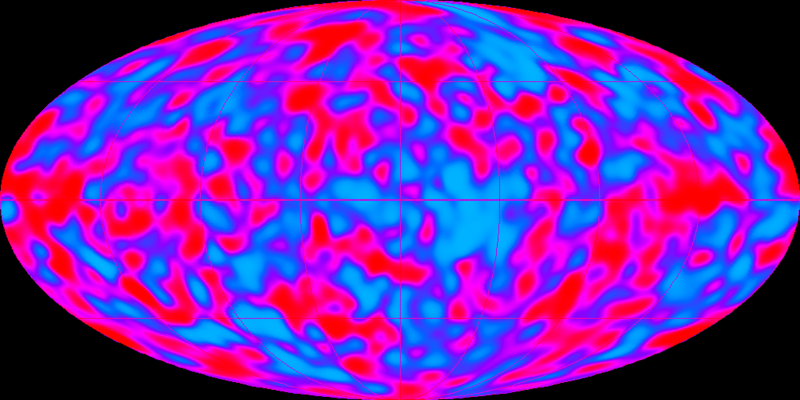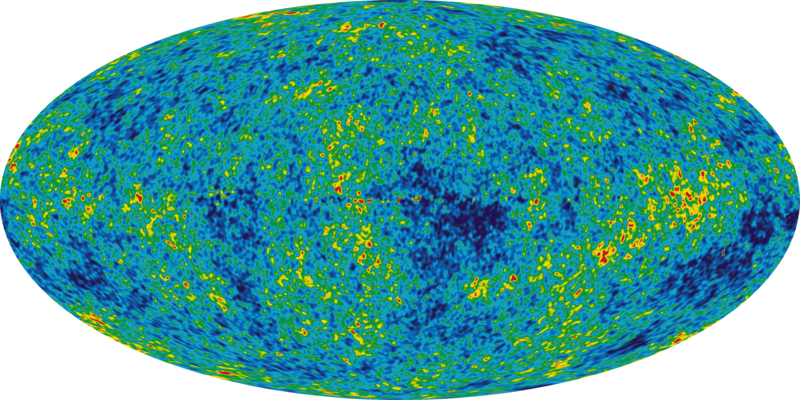Last time, we mentioned something called the Cosmic Microwave Background Radiation (CMBR), which is a remnant of the Big Bang. The presence of the CMBR gave rise to questions about the evolution of the Universe. There is no reason the CMBR should be as uniform as it appears to be. So what is the CMBR?
First, let's give a little background about what the CMBR really is. THE CMBR was actually discovered by accident even though it was predicted. In 1948, Ralph Alpher and Robert Herman predicted a background radiation in the Universe to be about 5 K based on the Hubble constant (revised up to 28 K just two years later). But despite attempts to observed the cosmic background radiation, it was elusive. It wasn't until 1964, when Arno Penzias and Robert Wilson encountered unexplained radio noise with an antenna for Bell Labs intended for use in radio astronomy. At first, they thought that the noise was due to pigeon droppings in the dish of the radio antennae, but after cleaning the dish and shooting the pigeons (which each claim the other ordered), the noise still existed, even finding that the noise level and signal were the same no matter where the antenna was pointed. Contacting Robert Dicke (whose design the antenna was modeled after), they and Dicke published a paper with Penzias and Wilson describing their findings and Dicke suggesting that the noise was actually the CMBR that had been predicted before. The presence of the CMBR was able to confirm the idea that the Big Bang may have really occurred.
The CMBR itself is the remnant of the Big Bang and permeates all of the Universe. It is from the leftover energy from recombination and has been carried along with space as space has expanded since the beginning of the Universe. The CMBR can be thought to be embedded in spacetime, and as space has expanded, it causes the wavelength of the CMBR to increase over time as well.
The CMBR is found to have a temperature of only 2.73K and is fairly uniform in all directions. There have been two NASA spacecraft studies (so far) to measure the CMBR.
- COBE (COsmic Background Explorer) launched by NASA in 1989 gave this famous image of the CMBR
Red is only 100 μK (10e-6) greater than average. Blue is only 100 μK lesser than average.
Image Credit:
The COBE datasets were developed by the NASA Goddard Space Flight Center under the guidance of the COBE Science Working Group
- WMAP (Wilkinson Microwave Anisotropy Probe) launched by NASA in 2001
5-Year Data release (average temperature 2.725K, range between 2.7248K (blue) to 2.7252K (red)
Image Credit:


No comments:
Post a Comment